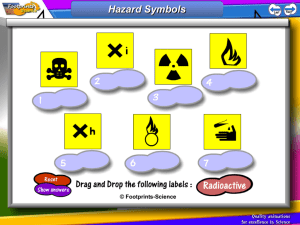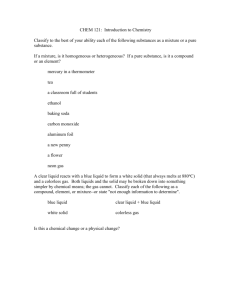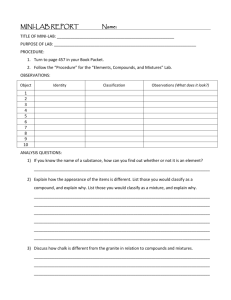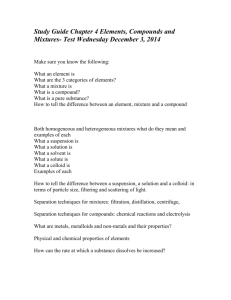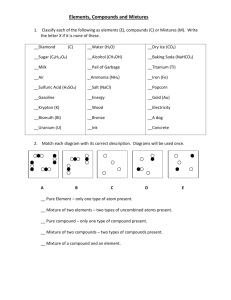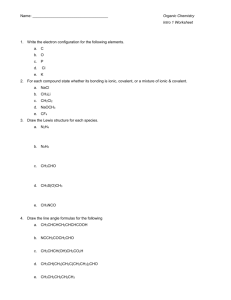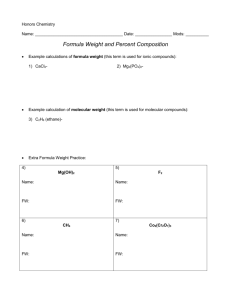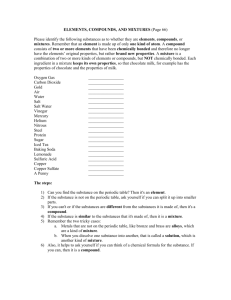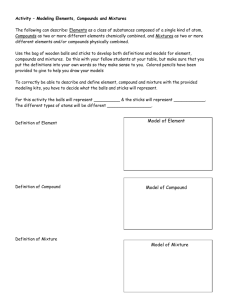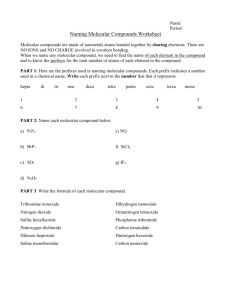Nature of Matter Learning Outcomes
advertisement
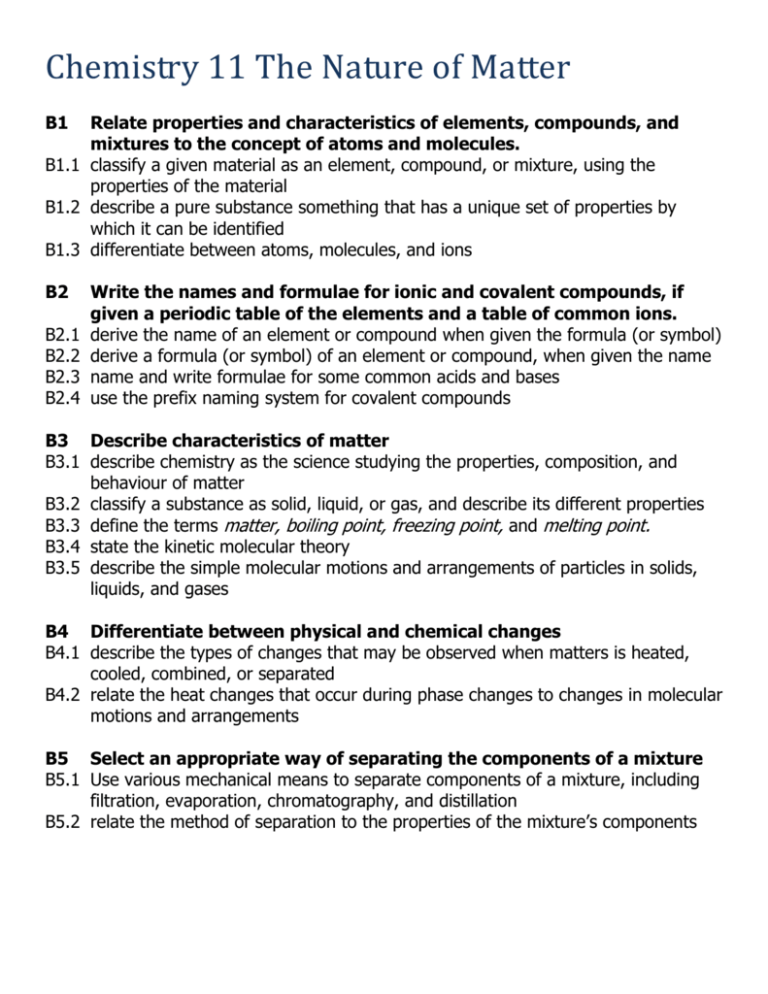
Chemistry 11 The Nature of Matter B1 Relate properties and characteristics of elements, compounds, and mixtures to the concept of atoms and molecules. B1.1 classify a given material as an element, compound, or mixture, using the properties of the material B1.2 describe a pure substance something that has a unique set of properties by which it can be identified B1.3 differentiate between atoms, molecules, and ions B2 B2.1 B2.2 B2.3 B2.4 Write the names and formulae for ionic and covalent compounds, if given a periodic table of the elements and a table of common ions. derive the name of an element or compound when given the formula (or symbol) derive a formula (or symbol) of an element or compound, when given the name name and write formulae for some common acids and bases use the prefix naming system for covalent compounds B3 Describe characteristics of matter B3.1 describe chemistry as the science studying the properties, composition, and behaviour of matter B3.2 classify a substance as solid, liquid, or gas, and describe its different properties B3.3 define the terms matter, boiling point, freezing point, and melting point. B3.4 state the kinetic molecular theory B3.5 describe the simple molecular motions and arrangements of particles in solids, liquids, and gases B4 Differentiate between physical and chemical changes B4.1 describe the types of changes that may be observed when matters is heated, cooled, combined, or separated B4.2 relate the heat changes that occur during phase changes to changes in molecular motions and arrangements B5 Select an appropriate way of separating the components of a mixture B5.1 Use various mechanical means to separate components of a mixture, including filtration, evaporation, chromatography, and distillation B5.2 relate the method of separation to the properties of the mixture’s components Chemistry 11 The Nature of Matter B1 Relate properties and characteristics of elements, compounds, and mixtures to the concept of atoms and molecules. B1.1 classify a given material as an element, compound, or mixture, using the properties of the material B1.2 describe a pure substance something that has a unique set of properties by which it can be identified B1.3 differentiate between atoms, molecules, and ions B2 B2.1 B2.2 B2.3 B2.4 Write the names and formulae for ionic and covalent compounds, if given a periodic table of the elements and a table of common ions. derive the name of an element or compound when given the formula (or symbol) derive a formula (or symbol) of an element or compound, when given the name name and write formulae for some common acids and bases use the prefix naming system for covalent compounds B3 Describe characteristics of matter B3.1 describe chemistry as the science studying the properties, composition, and behaviour of matter B3.2 classify a substance as solid, liquid, or gas, and describe its different properties B3.3 define the terms matter, boiling point, freezing point, and melting point. B3.4 state the kinetic molecular theory B3.5 describe the simple molecular motions and arrangements of particles in solids, liquids, and gases B4 Differentiate between physical and chemical changes B4.1 describe the types of changes that may be observed when matters is heated, cooled, combined, or separated B4.2 relate the heat changes that occur during phase changes to changes in molecular motions and arrangements B5 Select an appropriate way of separating the components of a mixture B5.1 Use various mechanical means to separate components of a mixture, including filtration, evaporation, chromatography, and distillation B5.2 relate the method of separation to the properties of the mixture’s components
